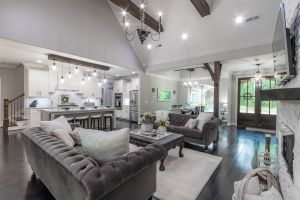Redecorating is always a fun prospect. For many people, all this entails is a small furniture shuffle and a bucket of paint. However, there are many more ways to explore a home creatively. Rather than choosing a single paint color, dig deeper into your options. The perfect aesthetic is out there, waiting to be discovered.
Texture Tone-Setting
One important detail people often overlook is texture. Not every wall or decoration needs be glossy, semi-glossy, or matte. These are just three options that are very common today. A few fun textures to consider are alternatives such as brick and stone, wood veneer, tiles, and stucco. Breaking up common textures with more creative ones can add real pop to a room. Try exploring a local construction store or website to see just how many textures are available. Many once-luxury textures are surprisingly affordable these days. In addition, unusual textures are often great ways to naturally introduce varied color palettes into a room.
Color of Moods
Color is another key aspect of decorating. There’s nothing wrong with just painting a room a solid color, but there can be much more to it. Color affects our psychology in subtle ways. Certain hues can induce happiness, tranquility, or even discomfort. It’s a good idea to research a color before you buy it. By checking out the subtext of colors, you can carefully design a room to support the function it serves. In example, red or yellow is a great color for study areas, as these colors encourage activity. On the other hand, dark purple is ideal for a bedroom, as it induces a good night’s rest.
Eras of Aesthetic
The last thing to consider when you’re choosing a decorating aesthetic is the era. Every ten or twenty years, humanity seems to visually reinvent itself. The result is hundreds of period looks from all over the world. The pieces you’ll most often find in antique shops are Americana items from between the 40s and 60s, but with determination, you can assemble the aesthetic of any era. Even if you’re uninterested in outdated styles, there’s a variety of options for more recent periods. For instance, trends from the 70s, 80s, and 90s in America are diverse in their appearance. There’s even a difference between post-millennium designs, often referred to as modern versus contemporary style. Investigate different eras to explore your options. Different time periods have specific texture, pattern, and color palette trends.
With a little effort on your part, redecorating can be much more than painting a wall or rearranging furniture. It can become its own collecting and exploring hobby. The sky really is the limit when you’re choosing a decorating aesthetic!
Here are some more posts you may find revelant:
Five Tips to Decorating a Small Space


